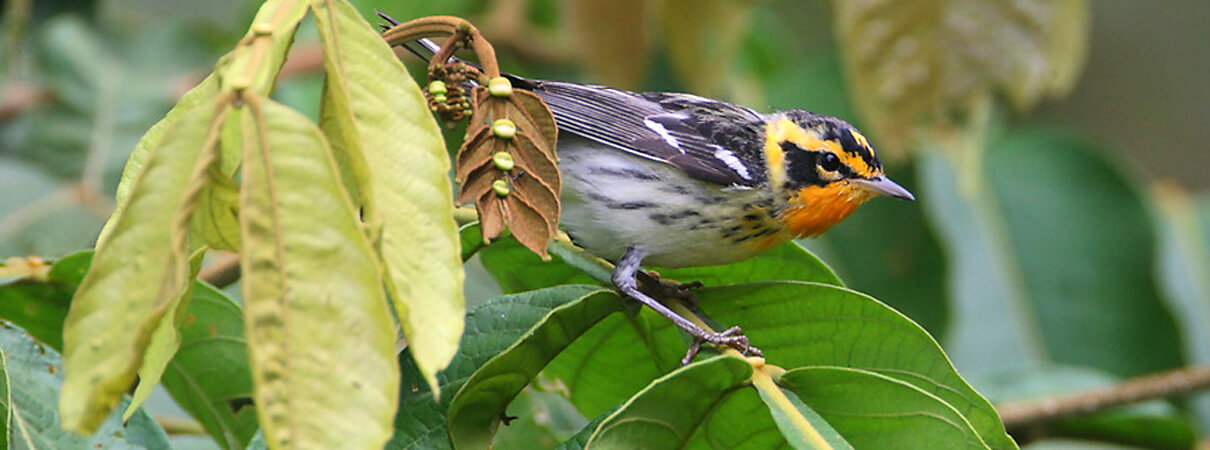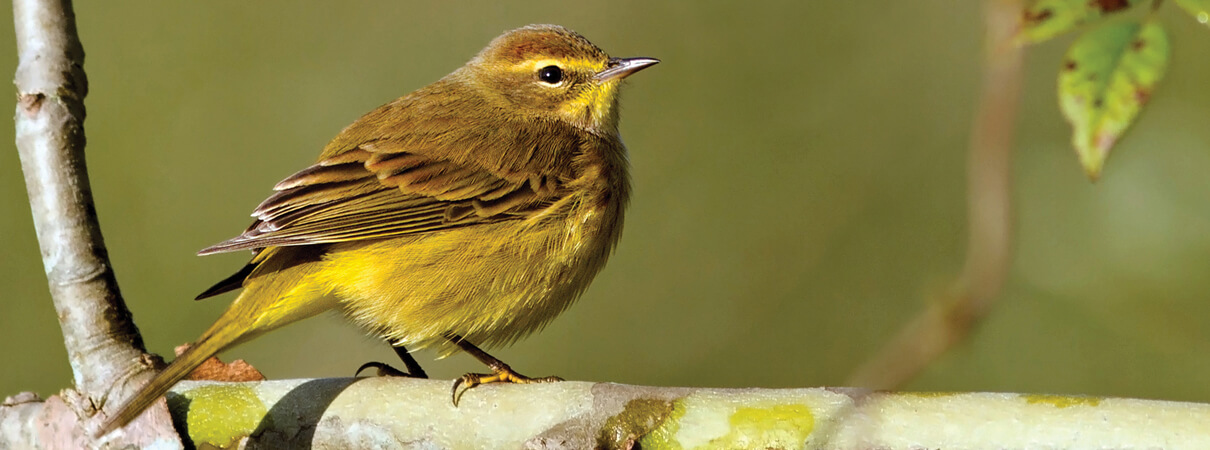To Save Migratory Birds, ABC Goes Where the Birds Go
By the time you read this, the fall bird migration in the Western Hemisphere will be complete. Summer's birds have long since stopped singing. Young birds have fledged, and the lucky ones will have safely arrived at their wintering grounds in Latin America and the Caribbean.

Bay-breasted Warbler—such as this one photographed on its wintering grounds in Colombia's El Paujil Reserve—require healthy habitat on both their wintering grounds and summer breeding grounds in order to thrive. Photo by Fundacion ProAves
Imagine embarking on a 3,000-mile journey. What will be there when these birds arrive? Will the forest in Honduras that was there last year await them again this year, or will the trees have been torn down to make way for a palm oil plantation? Will they find cover in a healthy mix of trees and coffee bushes or cacao trees in Costa Rica, or encounter a monoculture of pineapple?
The forests and farms of Central and South America can seem distant. But the goods produced there have a direct link to the birds that just left habitat near you. The global economy plays out on a local level in places like Guatemala, Honduras, Costa Rica, and Colombia, affecting how land—bird habitat—is used. Coffee, chocolate, rubber, black pepper, beef, pineapple, palm oil, bananas, and more—they all impact the availability and quality of habitat for migratory birds during their nonbreeding season.

Blackburnian Warblers breed in North America's eastern coniferous forests; this winter bird was photographed in the montane forests of northern South America. Photo by Joe Tobias
To make sure our colorful visitors have a place to go in winter, we have to make production methods of these goods friendlier for birds. This is where ABC's Migratory Bird Program is headed. We go where the birds go. We identify the land-use changes and challenges birds face, and we put solutions into action where they will make the most impact in new and creative ways.
In Nicaragua, for instance, we have worked with more than 200 landowners to plant additional trees in their coffee plantations and in their cattle pastures to make better winter homes for birds. In Mexico, we have helped to implement rotational grazing practices to ensure higher-quality grassland habitat for both livestock and birds. And in the Dominican Republic, we are using environmental payment incentives to support the protection of remnant habitat on small family-owned farms near protected areas.
In every case, to influence land use within targeted geographies, we have to know not just how birds use certain habitats. We need to understand the economics, management, and market chains of products as well.

Shade-grown coffee offers migratory birds the shelter and habitat they require while providing a necessary income for Latin American coffee farmers. Photo by Georges Duriaux
Migration—of the human kind—and the economy are hot topics in our current geopolitical landscape. Despite this, and the fact that geopolitics and the global economy directly affect their survival, migratory birds ignore borders. It's up to us to pay attention to our role in the global economy and make bird-friendly consumer choices if we want to help them.

To support their entire life cycle, Palm Warblers require healthy bogs and coniferous forests in Canada and the northern United States—where they breed each summer—and open, grassy habitat in Florida, the Caribbean, and Central America during the winter months. Photo by Mark Johnson
Perhaps these natural gems offer us an opportunity to do more than simply admire their beauty. Maybe in the effort to conserve birds, we can find a harmony between our economy and the natural world. Not only do migratory birds depend on it, but our own survival might just depend on it too.
Editor's note: A previous version of this article first appeared in the fall 2016 edition of Bird Conservation magazine.
 Andrew Rothman is a graduate of the University of Wisconsin-Stevens Point and holds degrees in Biology and Wildlife Management. Andrew was an international conservation officer for ABC from 2010 to 2013, and now serves as Director of ABC's Migratory Birds Program.
Andrew Rothman is a graduate of the University of Wisconsin-Stevens Point and holds degrees in Biology and Wildlife Management. Andrew was an international conservation officer for ABC from 2010 to 2013, and now serves as Director of ABC's Migratory Birds Program.
With your support, we can better protect the places that migratory birds need to survive. Click here to donate.


















































